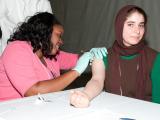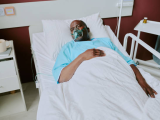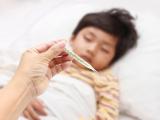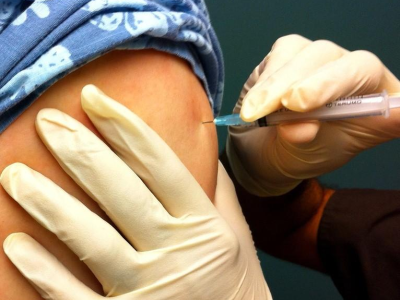Mar 24, 2009 – The annual meeting of the Society for Healthcare Epidemiology of America took place Mar 20-22 in San Diego. This News Scan Special Edition wraps up interesting research from that meeting on the difficult problem of increasing influenza immunization in healthcare workers.
Lip-sync video makes case to healthcare workers for flu shots
University of Pennsylvania Medical Center struggled to raise the rate of healthcare workers accepting annual flu shots, even with a 2-year-old "opt-out" program accompanied by mandatory education programs for those who refused. This year, though, flu-shot acceptance has risen 40%. What turned the tide was a home-grown music video, running on the hospital's intranet and patient TV, that features healthcare workers lip-syncing to "Baby Be Wise—Immunize," recorded by Penn's undergraduate a capella group, Penn Yo.
[YouTube video]
'Push-pull' campaign inspired by bioterror response plans increases vaccination
Flushing Hospital Medical Center outside New York City almost doubled healthcare workers' willingness to take flu shots by deploying a persuasion strategy borrowed from mass-disaster planning. The technique, called "push-pull," starts with intensive education on every hospital unit; personnel who either accepted the shot or signed a form declining it were given an ID-validating sticker for their badges. The following day, all employees were directed to a single hospital entrance, and those without stickers were steered to a vaccination team for a second go-round. Vaccination rose from 38% of staff to 60%.
Strict medical or religious exemption policy raised rates
Washington University School of Medicine and healthcare organization BJC HealthCare increased vaccination rates among workers by making flu shots a condition of employment unless the employee could show proof of medical or religious necessity. Employees claiming religious exemption were required to write a letter to human resources; employees claiming medical exemption, such as prior hypersensitivity to flu vaccine or to the eggs in which it is made, were required to present a letter from a physician. Employees who were not vaccinated and could not prove exemption were terminated. Vaccination rates rose to 98.4%.
50-hospital survey finds commonalities in diverse flu-shot programs
A nationwide survey conducted by researchers at Vanderbilt University School of Medicine in Nashville, Harborview Medical Center in Seattle, University of Maryland Medical Center in Baltimore, and the University HealthSystem Consortium in Oak Brook, Ill., found that programs to increase flu shots in hospitals vary regarding which employees they target and what strategies they use. However, the most successful programs had strong visible support from hospital leadership and provided after-hours and weekend access to vaccine.
Unvaccinated healthcare workers highly vulnerable to flu
Finally, a Canadian national survey suggested the potential risks to healthcare workers and their patients when workers are not vaccinated. A survey of healthcare workers in Toronto during the 2007-08 season, when the vaccine was poorly protective, demonstrated that 20% contracted flu. Moreover, 92% worked on the first day of their illness and 85% worked on every day that they were ill, increasing the risk of passing the disease to vulnerable patients.
















